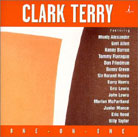February 2001
One possible reason is the use of the same piano in the same recording space by each of the different pianists. That gives us the opportunity to hear the many differing styles of these musicians while having a solid basis for comparison. Another reason this arrangement works is Chesky Records' and Terry’s decision to let each pianist pay tribute to a musical mentor, in the style of that person. Therefore, we get Tommy Flanagan paying tribute to Duke Ellington, John Lewis to Earl Hines, Gerry Allen to Lil Hardin Armstrong, Monty Alexander to Nat "King" Cole, Kenny Barron to Billy Strayhorn, Sir Roland Hanna to Eubie Blake, Benny Green to Fats Waller, Barry Harris to Bud Powell, Billy Taylor to Errol Garner, Junior Mance to Count Basie, Eric Reed to Jelly Roll Morton, Marion McPartland to Hoagy Carmichael, and my favorite, Don Friedman playing Thelonious Monk. This is a wonderful mixture of old masters with newer talent. It gives the recording vitality in addition to nostalgia. Of course, some numbers work better than others -- but they all work. There ain’t a clunker in the bunch. Don Friedman’s "Blue Monk" alone was worth the price of admission. I’ve only heard Friedman on one of his trio recordings, where he sounded remarkably like Bill Evans. This shows a different side to his virtuosity -- he certainly understands Monk and his music, and so does Clark Terry. (A side note: I wish Terry and Monk had recorded together more. Terry has a way with Monk’s music that would have made a perfect complement to Monk’s style of playing. Oh, well.) Another cut that works well is Eric Lewis' tribute to Art Tatum. You’ve got to be pretty confident, not to mention pretty darn talented, to tackle Tatum on his home turf. Lewis is both -- he’s got Tatum down. He’s not as fast, agile and inventive as Art was; then again, who is? But he certainly knows how to sound like Art without being a clone. I also found Junior Mance’s Count Basie tribute to be exciting. Remember, Clark Terry played in both the Basie and Ellington orchestras, so he’s right at home. But all this great playing would be for naught if the sound didn’t measure up. Thanks to Chesky, it does. The piano emanates from the left channel, but is not confined to it. Chesky gives the piano the space it needs to sound real -- both in size and tone. Terry’s trumpet seems to be a little right of center, but again, not confined to it. His sound floats outward, filling the acoustic space (St. Peters Episcopal Church in NYC). There is tremendous bite to the tone, and you can hear Terry’s breath blowing through the trumpet. It makes for a nice sense of realism. One On One accomplishes its goals, and does so very nicely. I wasn’t initially disposed to like this disc; I mean, come on, piano and trumpet duets? Silly me, I forgot this was a Clark Terry project and how inventive he can be. As it turned out, he not only held my attention, he increased my enjoyment with every track. GO BACK TO: |
 Clark Terry - One on One
Clark Terry - One on One![[Reviewed on CD]](../format/regcd.gif) By
anyone's standards, Clark Terry would have to be included in that handful of jazz icons
who have not only continued playing important jazz up to this moment, but who have helped
define what the jazz we listen to now sounds like. On One On One, Terry has set
himself the unenviable task of playing duets with 14 different pianists. I say
"unenviable" because only two musicians, Terry and whichever friend he’s
playing with, must hold our attention as well as complement each other. Not an easy task.
Yet One On One works and works well.
By
anyone's standards, Clark Terry would have to be included in that handful of jazz icons
who have not only continued playing important jazz up to this moment, but who have helped
define what the jazz we listen to now sounds like. On One On One, Terry has set
himself the unenviable task of playing duets with 14 different pianists. I say
"unenviable" because only two musicians, Terry and whichever friend he’s
playing with, must hold our attention as well as complement each other. Not an easy task.
Yet One On One works and works well.